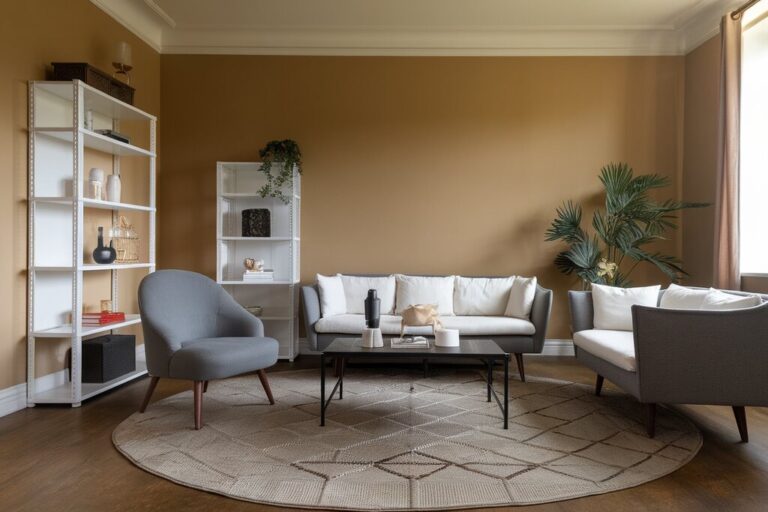In this blog, I will share how transition rhythm enhances interior design by creating smooth visual and physical movement between spaces. A well-planned transition ensures that no area feels isolated or disconnected.
Without a transition rhythm, a home can feel disjointed. Sudden flooring changes, harsh color contrasts, or mismatched furniture styles can break the flow. This makes a space feel cluttered rather than cohesive.
By using curved furniture, gradual color shifts, and continuous flooring, you can guide the eye effortlessly from one area to another. A well-executed transition rhythm helps create a balanced, welcoming, and visually appealing space.
The Role of Transition in Interior Design
A home without a transition rhythm can feel disorganized. Sudden changes in flooring, colors, or styles create a fragmented look. Smooth transitions ensure that each element connects naturally, making spaces feel unified and intentional.
How does it work?
Gradual shifts in shape, color, texture, and materials create flow. A curved doorway softens movement between rooms. A consistent color palette maintains harmony. Using similar materials across different areas prevents visual disruptions.
Where You’ll See It?
Transition rhythm appears in open layouts, where spaces blend seamlessly. Hallways guide movement between rooms. Thoughtful furniture arrangements direct the eye smoothly. Even lighting placement influences how a space feels connected.
Key Design Elements That Create Smooth Transitions
1. Curves & Soft Lines
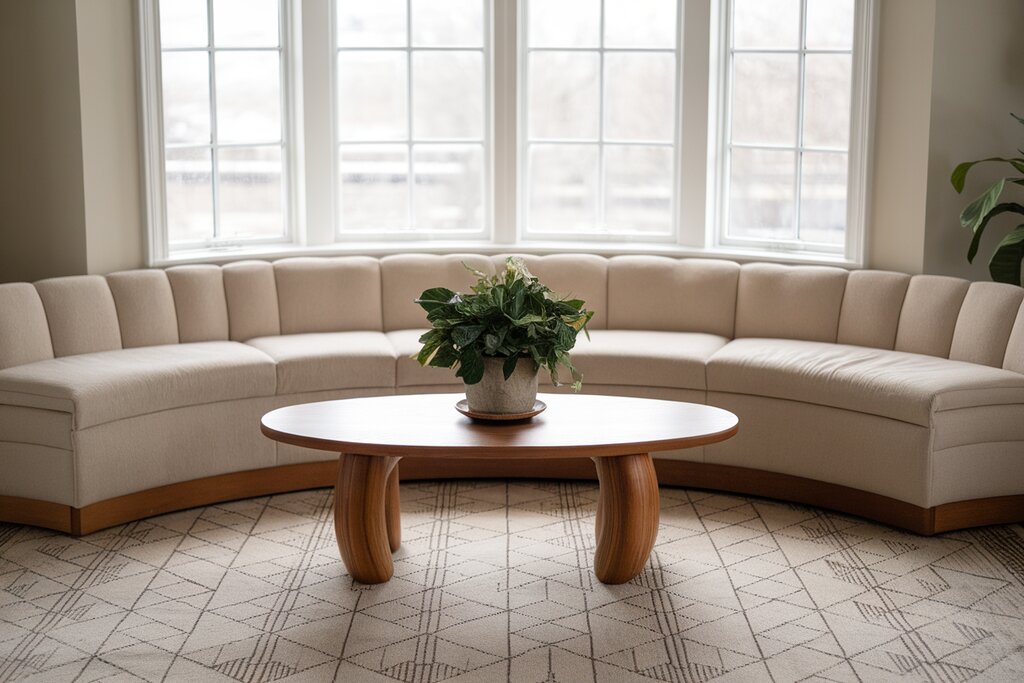
Straight lines create stops while curves encourage movement. They help your eye travel smoothly across a space, making interiors feel more connected. Curves soften sharp angles and prevent abrupt visual breaks.
You can introduce curves through arched doorways, rounded furniture, circular rugs, and curved staircase railings. A round coffee table or a curved sofa can make a seating area feel inviting. Even small details, like an oval mirror or curved cabinet edges, contribute to a seamless flow.
2. Flooring That Flows
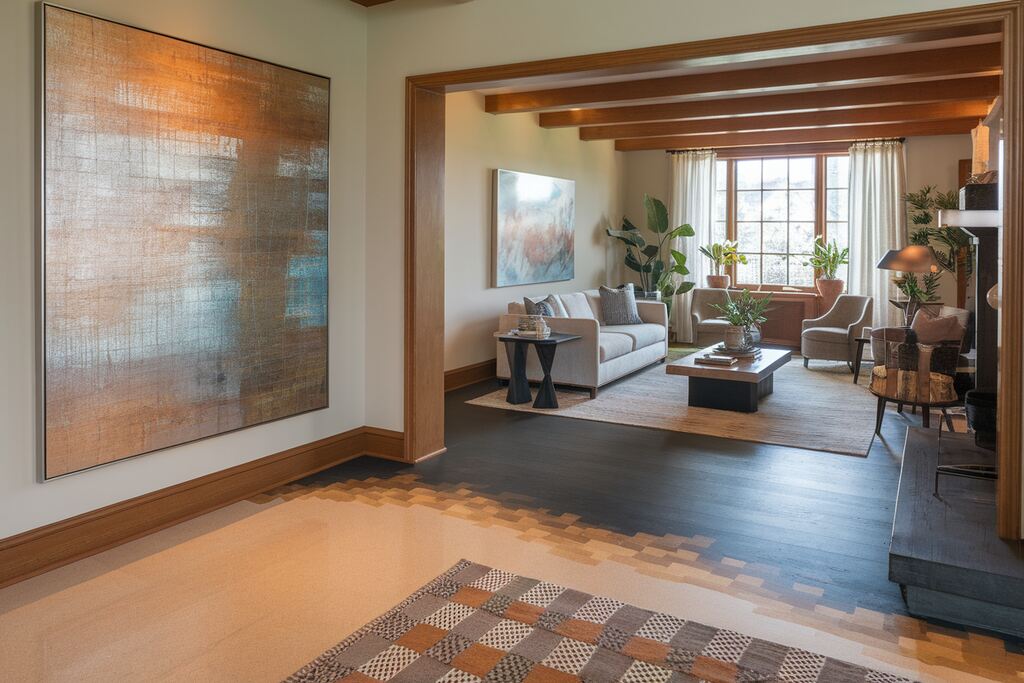
Flooring affects how spaces connect. A sudden change in flooring materials can make rooms feel disjointed. Consistency in flooring creates a sense of unity, leading the eye naturally from one area to another.
For a smooth transition, you can use the same flooring across connected spaces. If different materials are necessary, blend them gradually. A subtle shift in tile patterns or a transition strip between wood and stone can make the change feel intentional rather than abrupt.
3. Lighting as a Guide
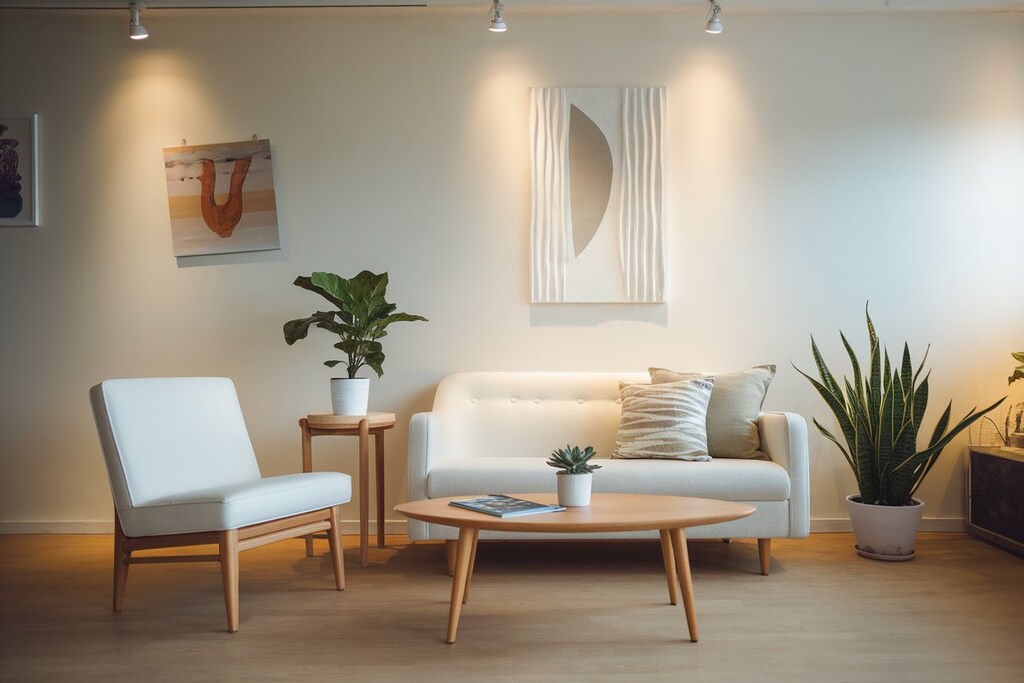
Lighting directs movement within a room. A well-placed light source can highlight a focal point and create a subtle flow from one area to the next. Instead of just brightening a space, lighting should help guide the eye naturally.
Consider pendant lights over a dining table, recessed lighting along hallways, or wall sconces leading to another room. Layered lighting ensures a smooth transition between areas, making each section feel connected while maintaining its function.
4. Color Progression
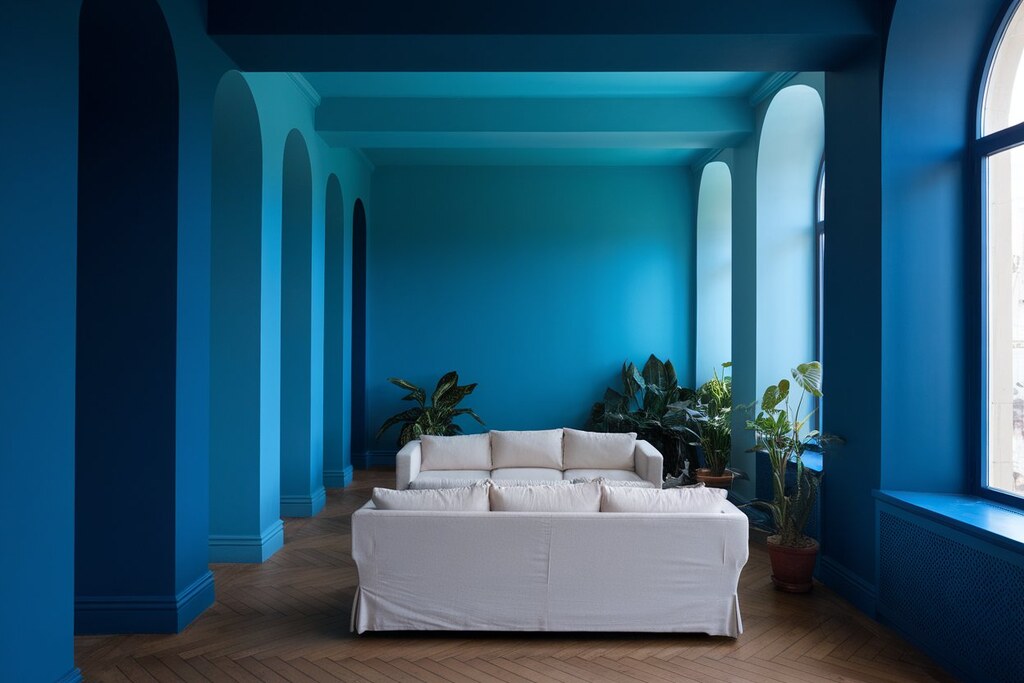
Colors influence how we perceive space. A harsh contrast between walls or decor can feel abrupt, while gradual color changes help maintain visual continuity. A well-planned color transition makes a room feel intentional and balanced.
You can use ombre walls, subtle tonal shifts, or a gradient of shades in decor. A soft transition from warm to cool tones in furniture or artwork can blend spaces effortlessly. Keeping a consistent color undertone throughout different rooms also enhances flow.
5. Strategic Furniture Placement
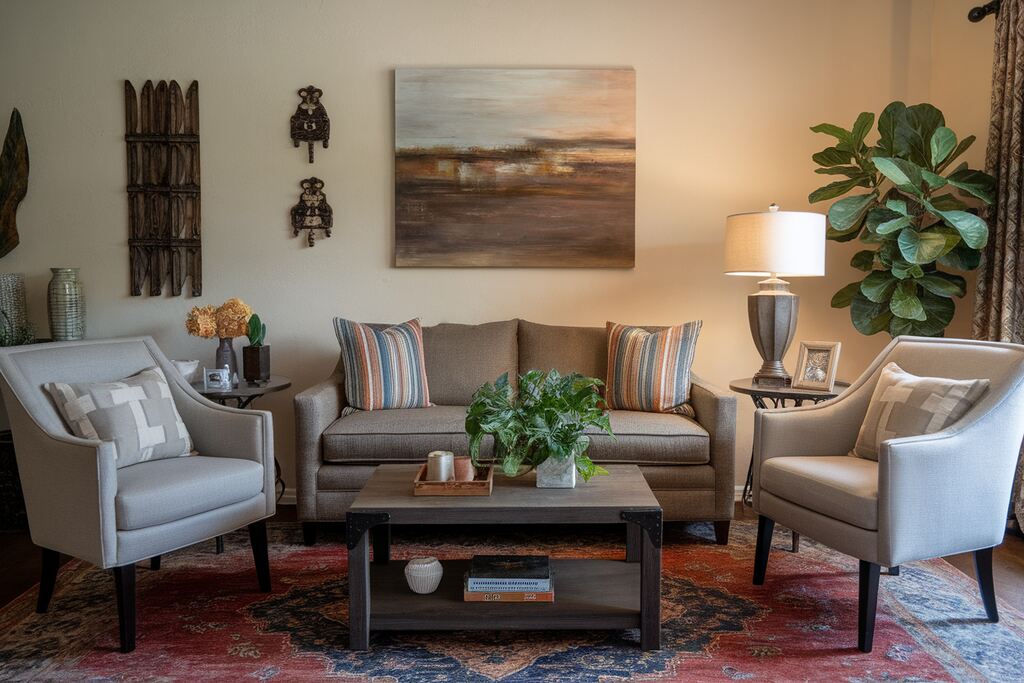
Furniture arrangement affects how you experience a space. The right placement can lead your eye naturally from one area to another, making the layout feel intentional. Poor placement, on the other hand, can create visual stops.
You can use curved chairs, angled seating, or layered rugs to establish a natural path. Positioning a bookshelf or console table along a walkway can subtly direct movement. A well-placed focal point, like a statement chair or an art piece, can encourage visual flow without overwhelming the space.
Practical Ways to Use Transition Rhythm in Every Room
Living Rooms

A well-arranged living room should feel open and inviting. Seating placement plays a key role in transition rhythm. Instead of placing furniture in straight lines, arrange sofas and chairs in a gentle curve. This guides movement naturally and creates a conversation-friendly layout.
You can add a large area rug to help unify the space. It visually anchors furniture and connects different seating areas. If your living room leads into another space, use matching or complementary rugs to create a seamless transition.
Open-Concept Kitchens
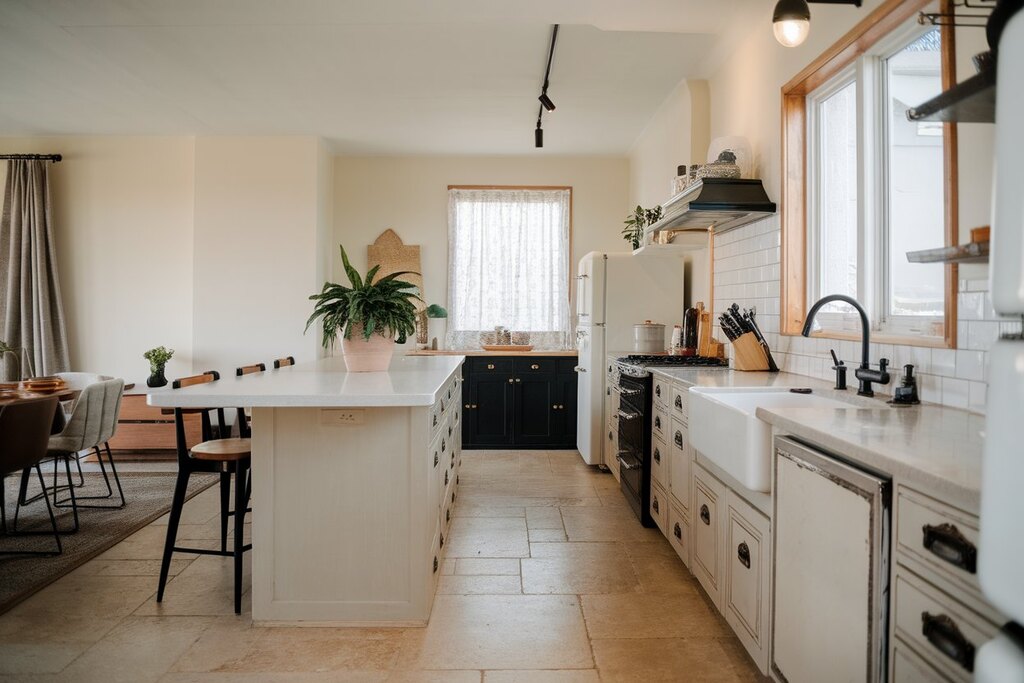
Open kitchens need clear yet subtle boundaries. One way to achieve this is by extending the backsplash tiles slightly beyond the kitchen area. This design trick blends cooking and dining spaces, making them feel cohesive.
Lighting also helps define zones without physical barriers. You can add pendant lights over an island or dining table to create a smooth visual transition. Under-cabinet lighting can enhance depth while maintaining a continuous flow between prep and dining areas.
Bedrooms
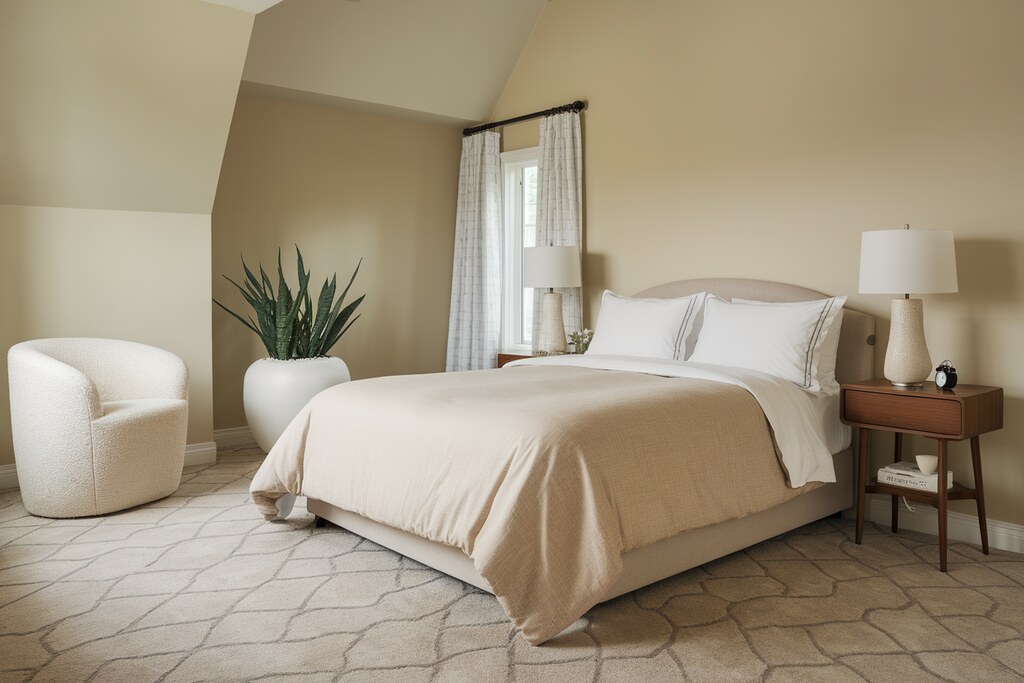
Bedrooms should feel calm and connected. A transition rhythm helps achieve this by ensuring a smooth flow in colors and furniture shapes. A gradual shift from dark to light tones on walls, bedding, and decor enhances relaxation.
Furniture selection also impacts flow. A curved headboard or rounded nightstands soften sharp lines, making the space feel more organic. Instead of harsh contrasts, choose materials and colors that gradually shift from one section to another.
Bathrooms
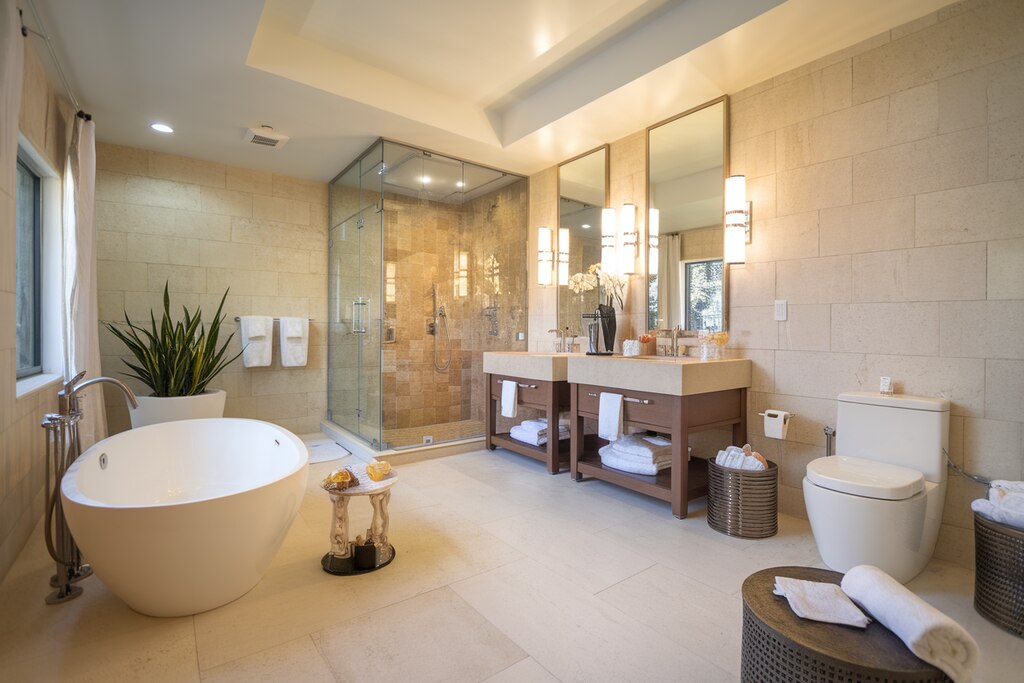
Bathrooms are small but benefit greatly from transition rhythm. You can extend floor tiles up the walls to create a seamless effect. This eliminates harsh breaks, making the space feel larger and more connected.
Lighting also plays a key role. Bright task lighting is essential, but it should transition smoothly into softer ambient lighting. Wall sconces, recessed lighting, or dimmable fixtures help maintain a balanced and inviting atmosphere.
Common Mistakes to Avoid
1. Abrupt Flooring Changes
Flooring sets the foundation for a space. A sudden shift in materials can feel jarring, making rooms seem disconnected. Walking from hardwood to bright tiles without a transition strip disrupts visual flow. Instead, use blended materials or gradual shifts to create a seamless connection.
If you must change flooring, keep colors and textures complementary. A transition piece between wood and tile can ease the shift. Using similar undertones across different materials also helps maintain harmony.
2. Ignoring Scale & Proportion
Balance is key in design. A massive section next to a tiny coffee table throws off the visual flow. Similarly, small decor pieces scattered among oversized furniture feel out of place. Proportion ensures that every element relates well to the others.
Gradual scaling creates better transitions. Instead of jumping from large to small, introduce medium-sized elements in between. For example, a tall bookshelf next to a low sofa feels disconnected, but adding a mid-height side table bridges the gap.
3. Overusing Contrast
Contrast adds depth, but too much can feel chaotic. A space with high-contrast walls, furniture, and decor elements competes for attention. The result? A room that feels visually overwhelming rather than balanced.
To maintain flow, contrast should be controlled and intentional. If you have dark walls, balance them with softer, gradual transitions in furniture and accents. Instead of extreme color differences, try blending shades within the same palette for a cohesive look.
Conclusion
A transition rhythm enhances the flow of a space by ensuring smooth connections between elements. It’s not about rigid guidelines but about moving feel natural.
Thoughtful use of curves, lighting, flooring, and color transitions helps maintain harmony. When each element flows seamlessly into the next, your space feels balanced and visually cohesive.
By applying these principles, you create an environment that is both functional and inviting. A well-designed transition keeps spaces connected, making every room feel intentional and unified.
FAQs
1. What is transition rhythm in interior design?
Transition rhythm is the seamless visual movement that connects different elements in a space. It helps the eye glide smoothly across a room without abrupt stops, using curves, color gradients, lighting, and flooring continuity to create a cohesive, harmonious environment that feels natural and intentional.
2. How does transition rhythm differ from other types of rhythm?
Unlike repetition or contrast, transition rhythm focuses on fluidity rather than pattern-based movement. It’s about guiding the eye naturally through soft curves, gradual color shifts, and architectural flow, whereas repetition relies on recurring elements, and contrast uses stark differences to create rhythm.
3. What are some easy ways to add transition rhythm to a space?
Incorporate curved furniture, archways, or circular decor to soften sharp lines. Use consistent flooring materials to avoid abrupt changes. Gradual color shifts and layered lighting also enhance visual flow, ensuring smooth movement between different sections of a room.
4. Can transition rhythm work in small spaces?
Absolutely! In compact rooms, the transition rhythm prevents visual clutter by maintaining a smooth flow. Using rounded edges, soft lighting, and consistent color schemes keeps the space feeling open and cohesive. Avoid sudden material changes or contrasting colors that might break the sense of unity.
5. How does flooring affect transition rhythm?
Flooring plays a major role in connecting spaces effortlessly. Using the same material throughout, or blending materials with a subtle border or gradual transition, ensures fluid movement. Sudden flooring changes create visual barriers, while continuous flooring enhances unity and spaciousness.
6. What role does lighting play in transition rhythm?
Lighting directs the eye through a room, reinforcing movement. Recessed lighting, cove lighting, and pendant placements help guide transitions while soft, diffused lights maintain continuity. Avoid harsh, unbalanced lighting changes that can disrupt the flow.
7. Can color choices improve transition rhythm?
Yes! Gradual color changes help maintain visual harmony. Instead of abrupt shifts, use tonal variations within the same color family. An ombre wall, for example, creates a natural transition, leading the eye smoothly across a space without sudden visual stops.
8. What are common mistakes in transition rhythm?
One major mistake is abrupt changes in flooring, lighting, or colors, which create visual breaks instead of smooth transitions. Overusing sharp lines and excessive contrast also interrupts flow. Instead, prioritize gradual shifts and consistent design elements for a balanced, cohesive look.

